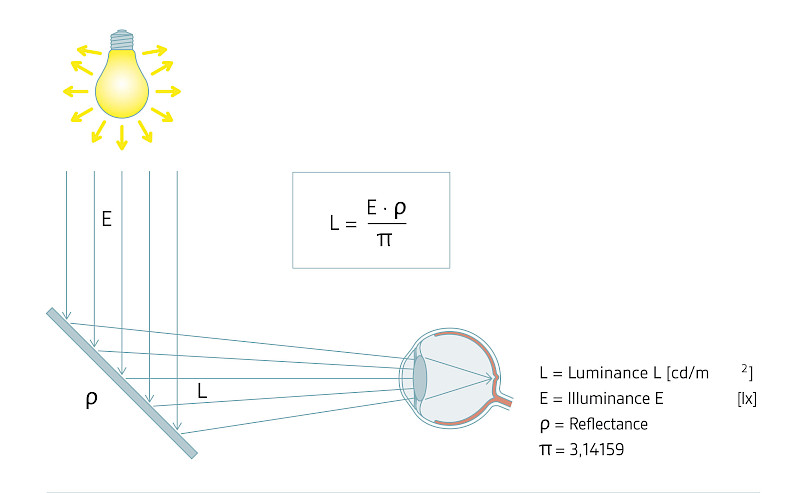Working at a screen places high demands on the eyes. A few rules can help in designing office workplaces well.
Horizontal illuminance
An important parameter in lighting design is illuminance, measured in lux (lx). The rule is: the more demanding the visual task, the higher the illuminance required. At a minimum, the following reference values should be observed:
|
Area |
Examples according to ASR A3.4 |
Lux |
|---|---|---|
|
General room lighting |
Filing, copying |
300 |
|
Workplace lighting |
Writing, reading, data processing |
500 |
|
Task lighting (localised) |
Technical drawing (hand drawing) |
750 |
|
Special areas |
Archives |
200 |
Measurements are taken at a height of 0.75 m above floor level.
The illuminance values given above are minimum requirements. Higher levels may be advisable, particularly for older employees. At the very least, a desk lamp should be provided. A controllable overall lighting system is recommended.
It should also be considered that illuminance levels decrease over time due to ageing and soiling of lamps. Depending on the maintenance factor, installation with higher illuminance levels may therefore be necessary. Higher levels are also advisable when the visual task places particularly high demands on the eyes.
Illuminance
Illuminance alone is not sufficient to describe the effect of light. The actual perceived brightness depends largely on the reflection of light from surfaces at and around the workstation. At identical illuminance, the impression of brightness is significantly higher over a white surface than over a grey one. This effect is expressed in the measure of luminance (L), measured in candela per square metre (cd/m²).
Excessive luminance leads to glare. More on this can be found in the corresponding chapter.
Light-coloured surrounding surfaces make rooms appear brighter. However, surfaces at the workstation should not be too bright and, above all, not glossy – as both can cause reflected glare.
Luminance ratio
At the workplace and in its surroundings, a balanced luminance ratio between all surfaces is also important. Strain-free (stable) visual perception is ensured when the luminances of the visual task area (the task field, e.g. monitor or document) and of the surrounding surfaces (the background, e.g. walls, ceilings, windows, but also the room’s lighting systems) are within a ratio of 1:2 to 1:10 from task field luminance to background luminance.
DIN 5035–7 permits luminance ratios of more than 10:1 for the wider visual field. However, this leads to increased mental strain.
Colour rendering
In addition to sufficient brightness and glare-free conditions, an accurate impression of the illuminated objects is important. This is determined by the colour rendering index Ra. This dimensionless value classifies the colour rendering quality of lamps and can range from 0 to 100, with 100 representing absolutely faithful colour rendering. For office environments, ASR A3.4 requires a minimum value of 80 Ra.






